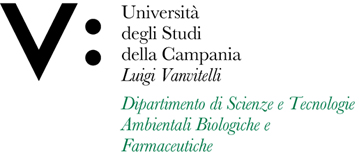Fabio MARZAIOLI
Insegnamento di PHYSICS FOR ISOTOPE RESEARCH
Corso di laurea magistrale in PHYSICS
SSD: FIS/07
CFU: 6,00
ORE PER UNITÀ DIDATTICA: 48,00
Periodo di Erogazione: Primo Semestre
Italiano
| Lingua di insegnamento | INGLESE |
| Contenuti | Lo studente acquisirà familiarità e conoscenza con argomenti concernenti i) le principali nozioni riguardanti gli isotopi stabili e radioattivi; ii) i fenomeni che caratterizzano la loro variabilità ambientale; iii) le metodologie fisiche di misura. |
| Testi di riferimento | Environmental isotopes in the hydrological cycle. Principles and Applications. VOLUME 1. |
| Obiettivi formativi | Conoscenza e capacità di comprensione dei principali fenomeni legati all’applicazione della fisica alla ricerca isotopica. |
| Prerequisiti | Conoscenza delle basi di Fisica Nucleare (utile); Conoscenza dei principi di Elettromagnetismo (importante). |
| Metodologie didattiche | Lezioni frontali ed esercitazioni numeriche per un totale di (6x8) 48 ore |
| Metodi di valutazione | Le modalità di verifica dell’apprendimento comprendono: una parte orale concorrente al 100% della valutazione finale. |
| Programma del corso | PROGRAM |
English
| Teaching language | ENGLISH |
| Contents | The student will acquire familiarity and knowledge of topics concerning i) the main notions concerning stable and radioactive isotopes; ii) the phenomena characterizing their environmental variability; iii) physical measurement methods. |
| Textbook and course materials | Environmental isotopes in the hydrological cycle. Principles and Applications. VOLUME 1. |
| Course objectives | Knowledge and understanding of the main phenomena related to the application of physics to isotope research. |
| Prerequisites | Knowledge of the basics of Nuclear Physics (useful); Knowledge of the principles of electromagnetism (important). |
| Teaching methods | Frontal Classes and numerical exercizes for a total of (6x8) 48 hours |
| Evaluation methods | Methods for learning verification include: an oral part that competes with 100% of the final assessment. |
| Course Syllabus | PROGRAM |








